Background
The multiple series Stieglitz called Equivalents combined two very important aspects of his photography: the technical and the aesthetic. He was a master at both, but with Equivalents he succeeded in bringing his skills to a new level. On the technical side, Stieglitz had been fascinated by the special problems of photographing clouds ever since the summer of 1887, when he took his first pictures of clouds over Lake Como in Italy. Until the 1920s most photographic emulsions were orthochromatic, which meant they were primarily sensitive to light on the blue end of the spectrum. This made photographing clouds particularly difficult because unless special filters were used the sky would appear very light and the clouds would be lost against it. [2] Over the years Stieglitz repeatedly took photographs of clouds using orthochromatic emulsions, but he reported "Every time I developed [a cloud negative] I was so wrought up, always believing I had nearly gotten what I was after – but had failed."
In 1922 Stieglitz read a commentary about his photography by Waldo Frank that suggested the strength of his imagery was in the power of the individuals he photographed. [3] Stieglitz was outraged, believing Frank had at best ignored his many photographs of buildings and street scenes, and at worst had accused him of being a simple recorder of what appeared in front of him. He resolved immediately to begin a new series of cloud studies "to show that (the success of) my photographs (was) not due to subject matter – not to special trees or faces, or interiors, to special privileges – clouds were there for everyone…" He said "I wanted to photograph clouds to find out what I had learned in forty years about photography. Through clouds to put down my philosophy of life –…My aim is increasingly to make my photographs look so much like photographs that unless one has eyes and sees, they won't be seen – and still everyone will never forget them having once looked at them." [4]
Coincidentally at this same time a new panchromatic photographic emulsion was developed that allowed the full range of colors to be captured. Soon after it became available Stieglitz aimed his 8 in × 10 in (200 mm × 250 mm) view camera at the sky and began taking pictures. By the next year he had created a series of ten mounted photographs he called Music: A Sequence of Ten Cloud Photographs (also called Clouds in Ten Movements). He told his wife Georgia O'Keeffe "I wanted a series that when seen by Ernest Bloch (the great composer) he would exclaim: Music! Music! Man, why that is music! How did you ever do that? And he would point to violins and flutes, and oboes, and brass…" [5] He first exhibited this series in 1923 in his one-man show at the Anderson Galleries in New York, and reported that when Bloch saw them there he had exactly the reaction Stieglitz had wanted. [6]
Encouraged by the success of the Music series he took his smaller 4 in × 5 in (100 mm × 130 mm) Graflex camera and shot dozens of pictures of the sky in the summer of 1923. He arranged many of these photographs into distinct series he called Songs of the Sky. In late 1924 he exhibited sixty-one of his cloud photos in a single room at the Anderson Galleries. In the catalog to the exhibition he wrote "Songs of the Sky – Secrets of the Skies as revealed by my Camera are tiny photographs, direct revelations of a man's world in the sky – documents of eternal relationship – perhaps even a philosophy." [7] After seeing the exhibition, Ananda Coomaraswamy, who was then curator at the Museum of Fine Arts in Boston, persuaded Stieglitz to donate some of his photographs, including five from Songs of the Sky, to the museum. This was the first time a major museum in the U.S. acquired photographs as part of its permanent collection.
Stieglitz continued photographing clouds and skies for most of the next decade. In 1925 he began referring to these photographs as Equivalents, a name he used for all such photographs taken from that year forward. In 1929 he renamed some of the original Songs of the Sky as Equivalents, and these prints are still known by both names today.
Dorothy Norman once recorded a conversation between Stieglitz and a man looking at one of his Equivalents prints:
Man (looking at a Stieglitz Equivalent): Is this a photograph of water?
Stieglitz: What difference does it make of what it is a photograph?
Man: But is it a photograph of water?
Stieglitz: I tell you it does not matter.
Man: Well, then, is it a picture of the sky?
Stieglitz: It happens to be a picture of the sky. But I cannot understand why that is of any importance. [8]
Stieglitz certainly knew what he had achieved in these pictures. Writing about his Equivalents to Hart Crane, he declared: "I know exactly what I have photographed. I know I have done something that has never been done…I also know that there is more of the really abstract in some 'representation' than in most of the dead representations of the so-called abstract so fashionable now." [9]
Artistic importance
The Equivalents are sometimes recognized as the first intentionally abstract photographs, although this claim may be difficult to uphold given Alvin Langdon Coburn's Vortographs that were created almost a decade earlier. [10] Nonetheless, it is difficult to look at them today and understand the impact that they had at the time. When they first appeared photography had been generally recognized as a distinct art form for no more than fifteen years, and until Stieglitz introduced his cloud photos there was no tradition of photographing something that was not recognizable in both form and content. Art critic Hilton Kramer said that Equivalents "undoubtedly owe something to the American modernist painting (Dove's and O'Keeffe's especially) that Stieglitz felt particularly close to at the time. Yet they go distinctly beyond the pictorial conventions that governed avant-garde painting in this period by reaching for the kind of lyric abstraction that was not to enter American painting until the 1940s and 1950s. In the line that can be traced from the paintings of Albert Pinkham Ryder to, say, those of Clyfford Still, it is in Stieglitz's Equivalents – rather than in painting itself – that we find the strongest link." [9]
One of the reasons that the strongest of these photographs appear so abstract is that they are void of any reference points. Stieglitz was not concerned with a particular orientation for many of these prints, and he was known to exhibit them sideways or upside down from how he originally mounted them. Photography historian Sarah Greenough points out that by doing so Stieglitz "was destabilizing your [the viewer's] relationship with nature in order to have you think less about nature, not to deny that it's a photograph of a cloud, but to think more about the feeling that the cloud formation evokes." [11] She further says:
- "The Equivalents are photographs of shapes that have ceded their identity, in which Stieglitz obliterated all references to reality normally found in a photograph. There is no internal evidence to locate these works either in time or place. They could have been taken anywhere—nothing indicates whether they were made in Lake George, New York City, Venice, or the Alps—and, except for the modern look of the gelatin silver prints, they could have been made at any time since the invention of photography. And because there is no horizon line in these photographs, it is not even clear which way is 'up' and which way 'down.' Our confusion in determining a 'top' and a 'bottom' to these photographs, and our inability to locate them in either time or place, forces us to read what we know are photographs of clouds as photographs of abstracted forms." [12]
New York Times art critic Andy Grundberg said The Equivalents "remain photography's most radical demonstration of faith in the existence of a reality behind and beyond that offered by the world of appearances. They are intended to function evocatively, like music, and they express a desire to leave behind the physical world, a desire symbolized by the virtual absence of horizon and scale clues within the frame. Emotion resides solely in form, they assert, not in the specifics of time and place." [13]
Photographer Ansel Adams said Stieglitz's work had a profound influence on him. In 1948 he claimed his first "intense experience in photography" was seeing many of the Equivalents (probably for the first time in 1933, when they met). [14]
Series and sets
Stieglitz arranged the photographs he called Equivalent into several different groups when he exhibited or published them, and often he inscribed the mounted prints on the back with one or more letters to further identify what he called "sets". These groupings are not sequential, and Stieglitz did not consider any single series or set as a discrete unit. Some of the individual prints are included in more than one series or set, and some copies of the same print are inscribed with different identifications. In general, his sets should be seen as "totally artificial constructions which mirror, not the passage of real time, but the change and flux of Stieglitz’s subjective state." [12]
The following is a chronological listing of the Equivalents photographs. Many of the prints do not have individual titles, and dozens of photographs are known by the same generic name Equivalent. The most comprehensive catalog of these photographs is found in Alfred Stieglitz: The Key Set., [15] and the numbers in this list refer to the photographs identified in that publication.
- 1923 – Songs of the Sky "W" / Equivalent "W" – two prints (Key Set #950-951). These prints were originally part of the Songs of the Sky series, but in 1929 Stieglitz renamed them Equivalents. These are not the same prints as those belonging to "Set W" taken in 1929.
- 1923 – Songs of the Sky "XX" / Equivalent "XX" –four prints (Key Set #952-955). These prints were originally part of the Songs of the Sky series, but in 1929 Stieglitz renamed them Equivalents. These are not the same prints as those belonging to "Set XX" taken in 1929.
- 1923 – Songs of the Sky / Equivalent – thirty-four prints (Key Set #956-989). These prints were originally part of the Songs of the Sky series, but in 1929 Stieglitz renamed them Equivalents.
- 1925 - Forty-five prints (Key Set #1093-1137)
- 1926 - Twenty prints (Key Set #1159-1178)
- 1927 - Ten prints (Key Set #1198-1207)
- 1928 - Twenty-seven prints (Key Set #1208-1239)
- 1929 – Set B: two prints (Key Set #1282-1283)
- 1929 – Set C2: five prints (Key Set #1253-1257)
- 1929 – Set HH: three prints (Key Set #1258-1260)
- 1929 – Set K: three prints (Key Set #1261-1263)
- 1929 – Set O: seven prints (Key Set #1264-1270)
- 1929 – Set W: five prints (Key Set #1277-1281)
- 1929 – Set XX: nine prints (Key Set #1284-1292)
- 1929 – Thirteen prints ("Key Set" #1293-1305)
- 1930 - Twenty prints (Key Set #1330-1349)
- 1931 - Fifteen prints (Key Set #1412-1426)
- 1933 – Three prints (all from one negative) (Key Set #1512-1514)
- 1934 – Six prints (Key Set #1558-1563)

Pictorialism is an international style and aesthetic movement that dominated photography during the later 19th and early 20th centuries. There is no standard definition of the term, but in general it refers to a style in which the photographer has somehow manipulated what would otherwise be a straightforward photograph as a means of creating an image rather than simply recording it. Typically, a pictorial photograph appears to lack a sharp focus, is printed in one or more colors other than black-and-white and may have visible brush strokes or other manipulation of the surface. For the pictorialist, a photograph, like a painting, drawing or engraving, was a way of projecting an emotional intent into the viewer's realm of imagination.

Edward Henry Weston was a 20th-century American photographer. He has been called "one of the most innovative and influential American photographers" and "one of the masters of 20th century photography." Over the course of his 40-year career Weston photographed an increasingly expansive set of subjects, including landscapes, still lifes, nudes, portraits, genre scenes and even whimsical parodies. It is said that he developed a "quintessentially American, and especially Californian, approach to modern photography" because of his focus on the people and places of the American West. In 1937 Weston was the first photographer to receive a Guggenheim Fellowship, and over the next two years he produced nearly 1,400 negatives using his 8 × 10 view camera. Some of his most famous photographs were taken of the trees and rocks at Point Lobos, California, near where he lived for many years.

Georgia Totto O'Keeffe was an American modernist painter and draftswoman whose career spanned seven decades and whose work remained largely independent of major art movements. Called the "Mother of American modernism", O'Keeffe gained international recognition for her meticulous paintings of natural forms, particularly flowers and desert-inspired landscapes, which were often drawn from and related to places and environments in which she lived.

Alfred Stieglitz was an American photographer and modern art promoter who was instrumental over his 50-year career in making photography an accepted art form. In addition to his photography, Stieglitz was known for the New York art galleries that he ran in the early part of the 20th century, where he introduced many avant-garde European artists to the U.S. He was married to painter Georgia O'Keeffe.
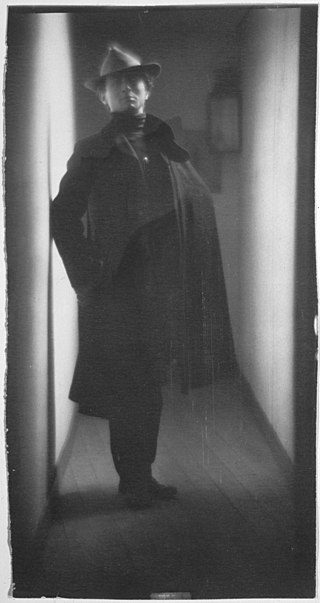
Edward Jean Steichen was a Luxembourgish American photographer, painter, and curator, renowned as one of the most prolific and influential figures in the history of photography.

Minor Martin White was an American photographer, theoretician, critic, and educator. He had an intense interest in how people viewed and thought about photographs and a personal vision guided by several spiritual and intellectual philosophies.
291 is the commonly known name for an internationally famous art gallery that was located in Midtown Manhattan at 291 Fifth Avenue in New York City from 1905 to 1917. Originally called the "Little Galleries of the Photo-Secession", the gallery was established and managed by photographer Alfred Stieglitz.
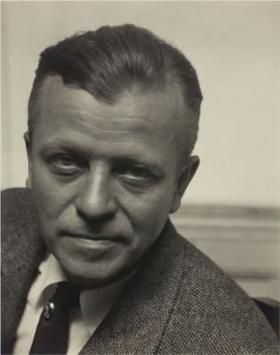
Arthur Garfield Dove was an American artist. An early American modernist, he is often considered the first American abstract painter. Dove used a wide range of media, sometimes in unconventional combinations, to produce his abstractions and his abstract landscapes. Me and the Moon from 1937 is a good example of an Arthur Dove abstract landscape and has been referred to as one of the culminating works of his career. Dove made a series of experimental collages in the 1920s. He also experimented with techniques, combining paints like hand mixed oil or tempera over a wax emulsion as exemplified in Dove's 1938 painting Tanks, in the collection of the Boston Museum of Fine Arts.

Alvin Langdon Coburn was an early 20th-century photographer who became a key figure in the development of American pictorialism. He became the first major photographer to emphasize the visual potential of elevated viewpoints and later made some of the first completely abstract photographs.

Gertrude Käsebier was an American photographer. She was known for her images of motherhood, her portraits of Native Americans, and her promotion of photography as a career for women.

Clarence Hudson White was an American photographer, teacher and a founding member of the Photo-Secession movement. He grew up in small towns in Ohio, where his primary influences were his family and the social life of rural America. After visiting the World's Columbian Exposition in Chicago in 1893, he took up photography. Although he was completely self-taught in the medium, within a few years he was internationally known for his pictorial photographs that captured the spirit and sentimentality of America in the early twentieth century. As he became well known for his images, White was sought out by other photographers who often traveled to Ohio to learn from him. He became friends with Alfred Stieglitz and helped advance the cause of photography as a true art form. In 1906 White and his family moved to New York City in order to be closer to Stieglitz and his circle and to further promote his own work. While there he became interested in teaching photography and in 1914 he established the Clarence H. White School of Photography, the first educational institution in America to teach photography as art. Due to the demands of his teaching duties, his own photography declined and White produced little new work during the last decade of his life. In 1925 he suffered a heart attack and died while teaching students in Mexico City.
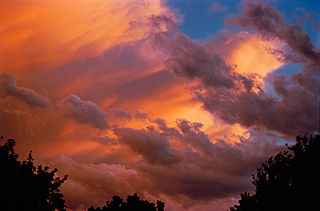
Cloudscape photography is photography of clouds or sky.
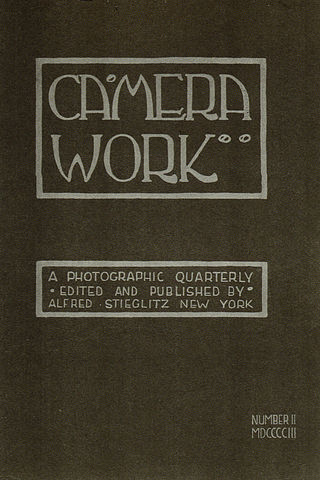
Camera Work was a quarterly photographic journal published by Alfred Stieglitz from 1903 to 1917. It presented high-quality photogravures by some of the most important photographers in the world, with the goal to establish photography as a fine art. It has been called "consummately intellectual", "by far the most beautiful of all photographic magazines", and "a portrait of an age [in which] the artistic sensibility of the nineteenth century was transformed into the artistic awareness of the present day."

291 was an arts and literary magazine that was published from 1915 to 1916 in New York City. It was created and published by a group of four individuals: photographer/modern art promoter Alfred Stieglitz, artist Marius de Zayas, art collector/journalist/poet Agnes E. Meyer and photographer/critic/arts patron Paul Haviland. Initially intended as a way to bring attention to Stieglitz's gallery of the same name (291), it soon became a work of art in itself. The magazine published original art work, essays, poems and commentaries by Francis Picabia, John Marin, Max Jacob, Georges Ribemont-Dessaignes, de Zayas, Stieglitz and other avant-garde artists and writers of the time, and it is credited with being the publication that introduced visual poetry to the United States.

Camera Notes was a photographic journal published by the Camera Club of New York from 1897 to 1903. It was edited for most of that time by photographer Alfred Stieglitz and was considered the most significant American photography journal of its time. It is valuable today both as a record of photographic aesthetics of the time and for its many high-quality photogravures by photographers such as Stieglitz, James Craig Annan, F. Holland Day, Robert Demachy, Frances Benjamin Johnston, Gertrude Kasebier and Clarence H. White.

Harriet Candace "Rose" Clark (1852–1942) was an early 20th-century American painter and pictorial photographer. She is best known for the photographs she exhibited with Elizabeth Flint Wade under their joint names, either as "Rose Clark and Elizabeth Flint Wade" or as "Misses Clark and Wade".

The Steerage is a black and white photograph taken by Alfred Stieglitz in 1907. It has been hailed as one of the greatest photographs of all time because it captures in a single image both a formative document of its time and one of the first works of artistic modernism.
There were men and women and children on the lower deck of the steerage. There was a narrow stairway leading to the upper deck of the steerage, a small deck right on the bow with the steamer.
To the left was an inclining funnel and from the upper steerage deck there was fastened a gangway bridge that was glistening in its freshly painted state. It was rather long, white, and during the trip remained untouched by anyone.
On the upper deck, looking over the railing, there was a young man with a straw hat. The shape of the hat was round. He was watching the men and women and children on the lower steerage deck...A round straw hat, the funnel leaning left, the stairway leaning right, the white drawbridge with its railing made of circular chains – white suspenders crossing on the back of a man in the steerage below, round shapes of iron machinery, a mast cutting into the sky, making a triangular shape...I saw shapes related to each other. I was inspired by a picture of shapes and underlying that the feeling I had about life."
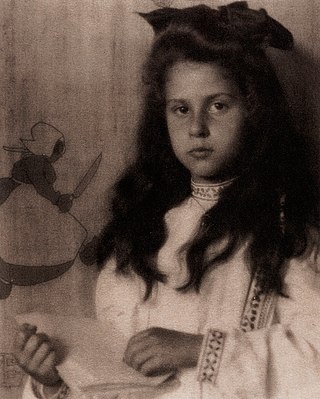
Katherine Stieglitz, or Katherine Stieglitz Stearns, was the daughter of Emmeline, or Emmy, and Alfred Stieglitz, an American photographer and modern art promoter. She was the subject of many of her father's photographs, particularly in her early years. They were exhibited and received praise for their wholesome sentiment. She graduated from Smith College before marrying Milton Sprague Stearns. After the birth of her son in 1923, she was institutionalized for depression and hallucinations and remained there until her death in 1971.

Steel: Armco, Middletown, Ohio is a black and white photograph taken by American photographer Edward Weston in 1922. The picture has the dimensions of 23 by 17,4 cm.

From the Back Window - 291 is a black and white photograph taken by Alfred Stieglitz in 1915. The picture was taken at night from a back window of his 291 gallery in New York. Its one of the several that he took that year from that window, including at a snowy Winter.



















